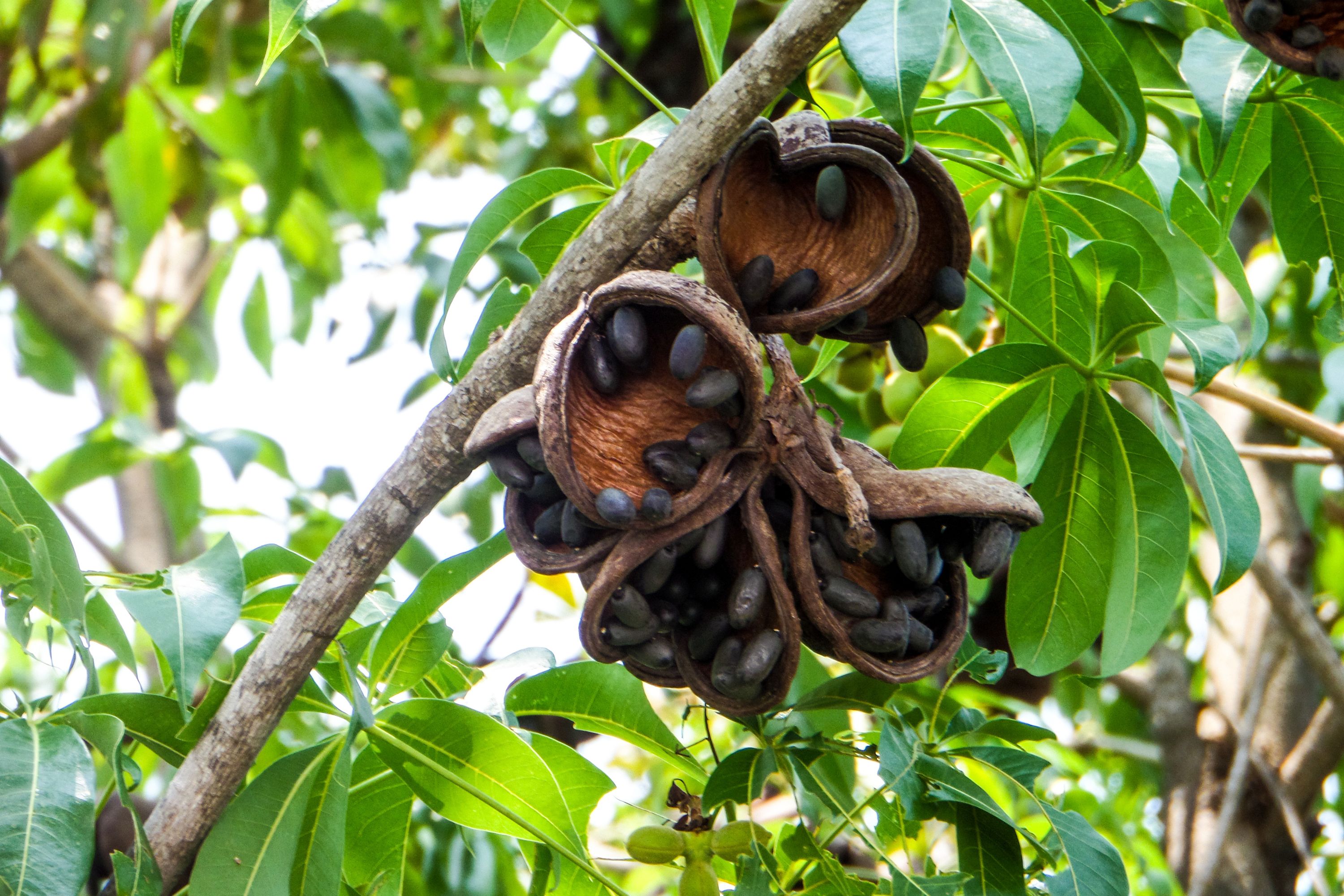Bastard poon tree
(Sterculia foetida)

Description
Sterculia foetida is a soft wooded tree that can grow up to 35 metres (115 ft.) tall. It was described in 1753 by Carl Linnaeus. Common names for the plant are the bastard poon tree, java olive tree, hazel sterculia, wild almond tree, and skunk tree. This is the type species of the genus Sterculia and both names mean bad-smelling: the name Sterculia comes from Sterquilinus, the Roman god of fertilizer or manure. The branches of Sterculia foetida are arranged in whorls; they spread horizontally. The tree's bark is smooth and grey. The leaves are placed at the end of branchlets; they have 125–230 mm long petioles; the blades are palmately compound, containing 7-9 leaflets. The leaflets are elliptical, 100–170 mm long, and shortly petioluled The petioles are the source of the foul smell of the plant. The flowers are arranged in panicles, 100–150 mm long. The green or purple flowers are large and unisexual as the tree is dioecious (male and female flowers are found on different trees). The pollens are oval in shape, approximately 40 microns in length. The calyx is dull orange and is divided into five sepals, each one 10-13 mm long. The fruit consists of four to five follicles, each follicle generally containing 10-15 seeds. The follicles are scarlet when ripe. In India, flowers appear in March, and the leaves appear between March and April. At Hyderabad (India), flowering was observed in September-October (2015) with ripened fruits on the top part and young green fruits at the lower branches. The fruit is ripe in February (11 months after the flowers appeared). Sterculia foetida has been found in many areas, including India, Taiwan, Indochina, the Philippines (where it is known as kalumpang), United States (Hawaii), Indonesia, Ghana, Australia, Mozambique, and Togo. The oil of Sterculia foetida has been found to be comparable to sunflower, soybean, and grapeseed oils for the use of biofuels. Sterculia foetida oil contains cyclopropene fatty acids (CPFA) such as 8,9 methylene-heptadec-8-enoic acid (malvalic acid) and 9,10-methylene-ocadec-9-enoic acid (sterculic acid). The flash point, iodine value, free fatty acid count, phosphorus content, cloud point, pour point, viscosity at 40 °C, oxidative stability at 110 °C, density, and trace metal count are all within ASTM and EN specifications.
Taxonomic tree:







